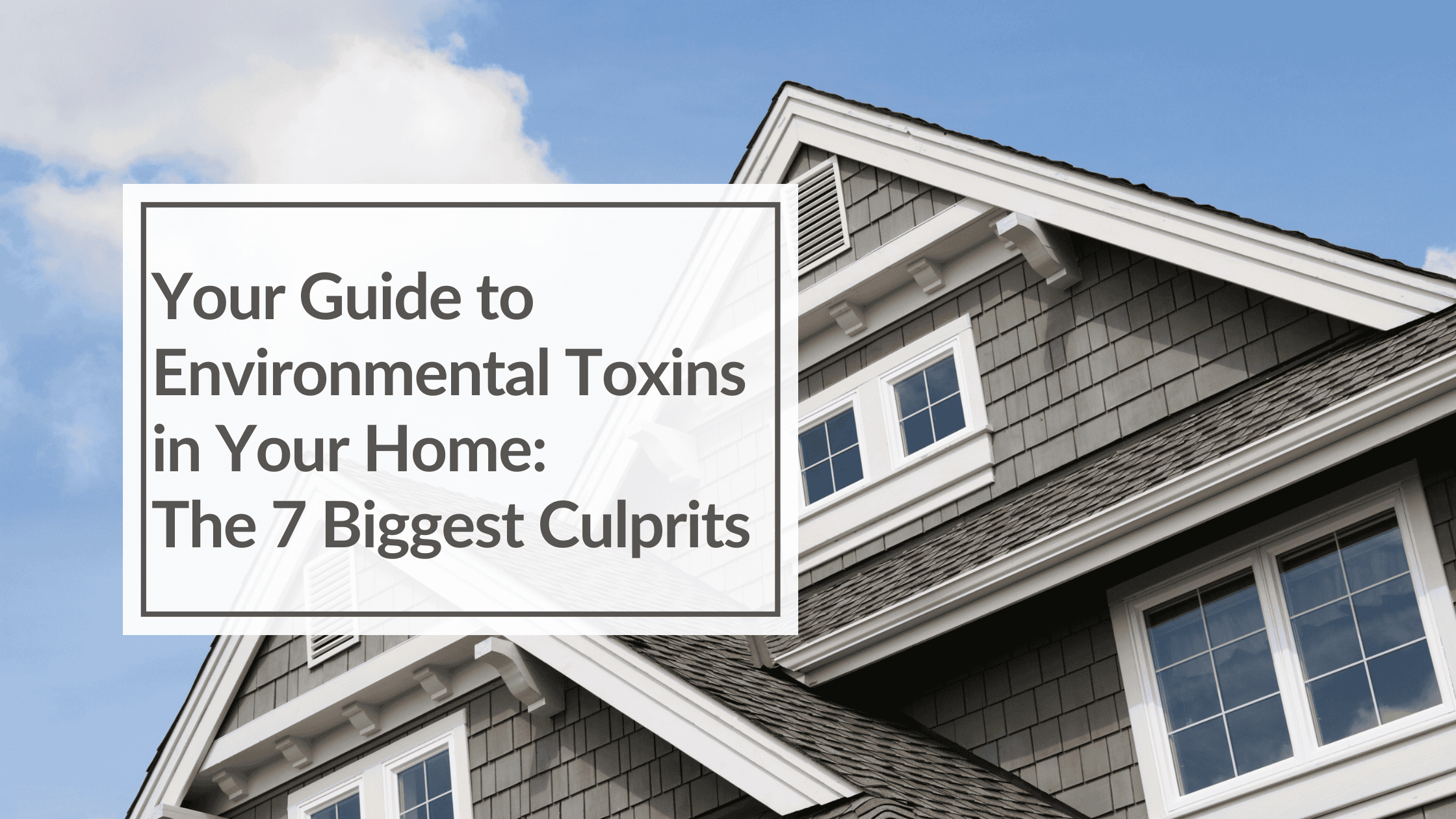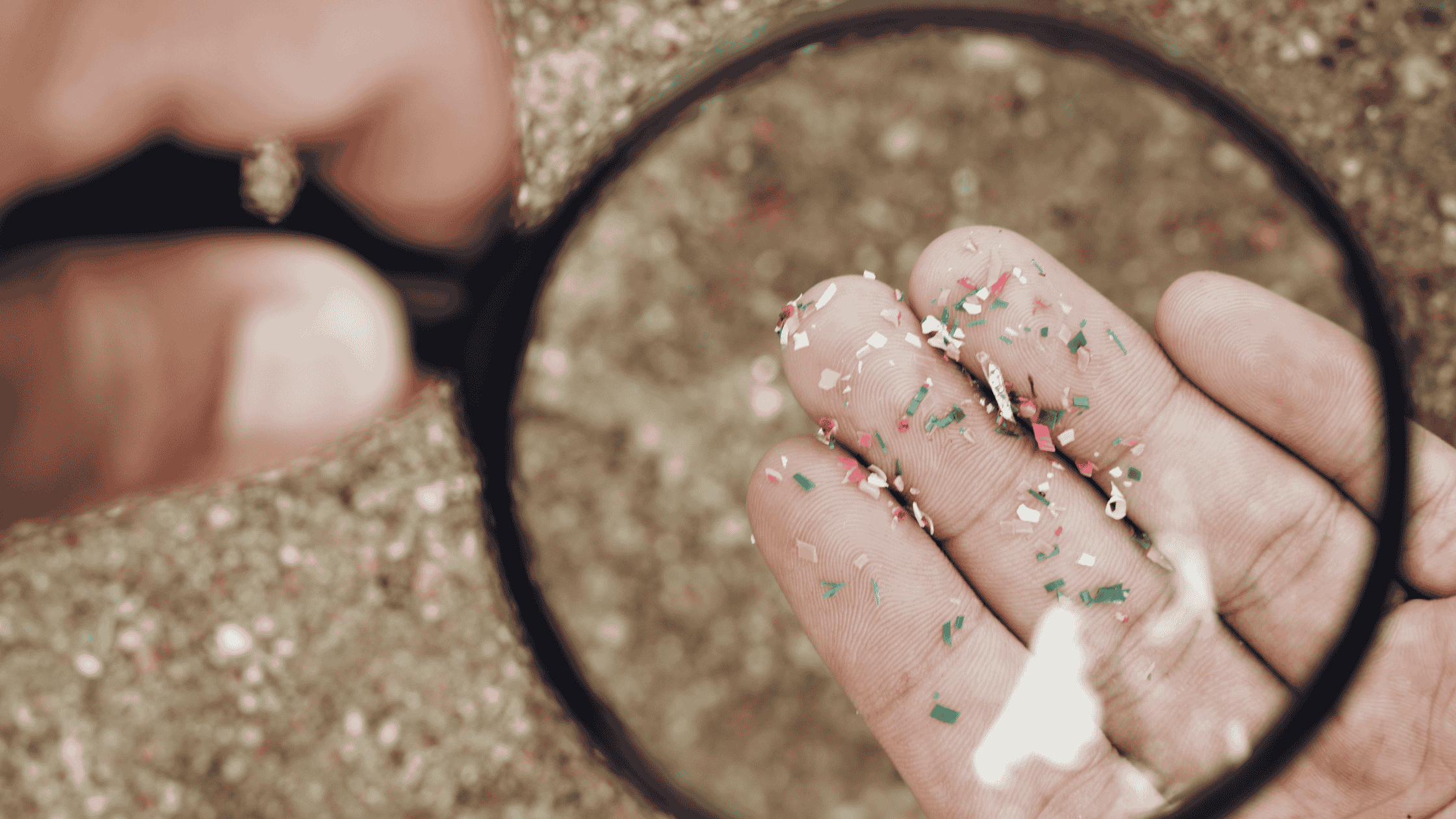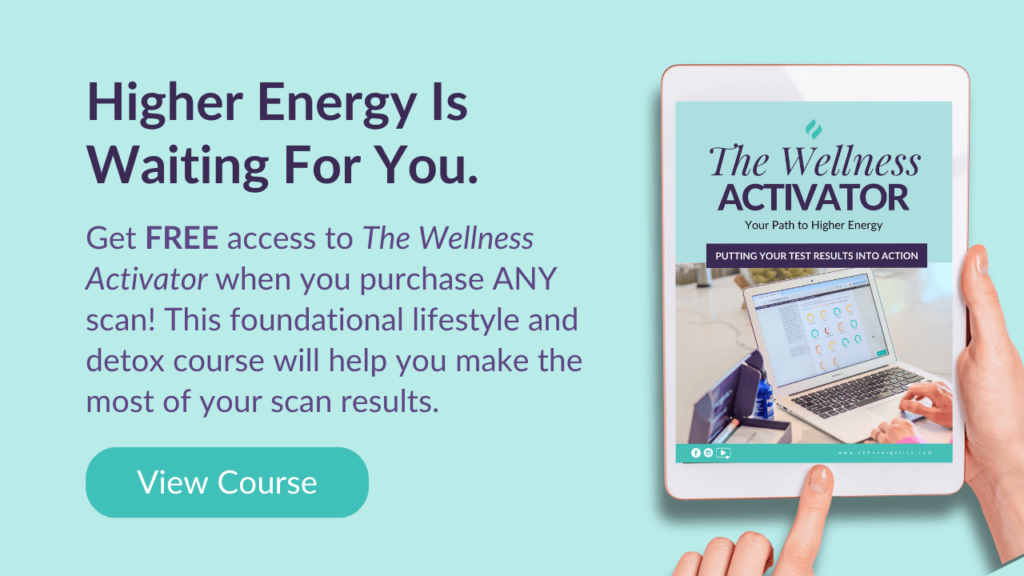
Are Environmental Toxins in Your House Affecting Your Health?
Environmental toxins are everywhere!
From your bathroom cleaner to the pan you used to fry your eggs this morning. Even the wood in your furniture or the materials used in your home’s structure can harbor harmful substances. The problem? Prolonged exposure to these hidden hazards can affect your health, even if you don’t immediately notice issues.
While many of us focus on detoxing our bodies, have you ever considered detoxing your home?
It’s easy to overlook the spaces where we spend so much of our time, but your home can be a significant source of toxins that impact your health.
A toxic house isn’t always obvious. It doesn’t matter if your home is decades old or brand new – it can contain many sources of environmental toxins. These toxins may be released into the air, settle on surfaces, or contaminate your food and water. That doesn’t sound good!
The solution? Start by understanding what you’re dealing with. Identifying these environmental toxins is the first step toward creating a toxin-free home. Let’s look at seven of the most common culprits lurking in your living space and offer practical ways to reduce exposure. Please don’t think you’re in immediate danger from your home – it’s all about taking action to make your home a cleaner, healthier space.

1. Volatile Organic Compounds (VOCs)
What are they?
VOCs (volatile organic compounds) are a group of chemicals that easily evaporate at room temperature.
Where can you find them?
These environmental toxins are found in a wide range of household products, including paints and varnishes, adhesives, cleaning products, air fresheners, and even your brand-new sofa, mattress, or carpet. So, if you’ve noticed the odor of a freshly painted room, a scented candle, or freshly dry-cleaned clothes, those are VOCs!
Why are they problematic?
The real issue with VOCs is how they accumulate indoors. Indoor levels can be 2-5 times higher than outdoor levels, making it harder to maintain a toxin-free home. Poor ventilation makes things worse. Short-term exposure can cause headaches, nausea, and dizziness.
What’s the impact on long-term health?
VOCs can mess with your Respiratory System, aggravating issues like asthma, allergies, and chronic irritation. They can also stress your liver and kidneys, which work overtime to detox.
In children, VOCs are particularly harmful, with studies linking exposure to developmental delays and behavioral problems. The Nervous System isn’t spared either—environmental toxins like benzene and toluene can interfere with brain function, leading to headaches, dizziness, or concentration difficulties. Over time, they may contribute to memory issues and mood disorders.
What can you do?
Reducing VOC exposure is about both prevention and ventilation for a toxin-free home:
- Opt for low-VOC or VOC-free paints (if possible) when renovating.
- Choose solid wood furniture over particleboard, which often contains formaldehyde-based glues.
- Add air-purifying plants such as spider plants or peace lilies to your home.
- Invest in an air purifier that can help filter VOCs.
2. Phthalates / Parabens
What are they?
Phthalates and parabens are endocrine-disrupting chemicals. Phthalates make fragrances last longer and are often added to plastics to make them more durable. Parabens are preservatives that help prevent the growth of bacteria and mold.
Where can you find them?
You might not think about it, but when you’re grabbing your shampoo or applying makeup, you could be exposing yourself to phthalates and parabens. These environmental toxins are also found in lotions, perfumes, deodorants, and other personal care products.
Why are they problematic?
They mimic hormones in the body, which can interfere with your Endocrine System and disrupt the balance of natural hormones. Phthalates are often listed under “Fragrance” or “Parfum,” so they’re not always obvious on product labels.
What’s the impact on long-term health?
Phthalates have been linked to reduced sperm count and fertility issues in men, while women may experience changes in their menstrual cycles or challenges with pregnancy. Children are particularly vulnerable; studies have shown that phthalate exposure can affect brain development, leading to learning difficulties and behavioral problems. Parabens have a similar impact by disrupting hormones like estrogen.
What can you do?
To reduce phthalate exposure in your home, start by being mindful of the products you buy:
- Opt for phthalate-free personal care products (look for those labeled “fragrance-free” or “phthalate-free”).
- Choose natural materials like wood, stone, or cotton rather than synthetic plastics for furniture and toys.
- Look for paraben-free skincare and beauty products—many natural brands will advertise this on their packaging.
- Use eco-friendly cleaning products that are free from chemicals.
3. Heavy Metals
What are they?
Heavy metals, such as lead, mercury, cadmium, aluminum, and arsenic, are naturally occurring but toxic when accumulated in the body.
Where can you find them?
Old paint in homes built before 1978 may contain lead, and certain plumbing systems can leach lead into drinking water. Mercury is found in some fish, lightbulbs, and thermometers, and cadmium is found in batteries, fertilizers, and cigarette smoke. Even your cookware, such as non-stick pans or cheap metal utensils, can contribute to heavy metal exposure.
Why are they problematic?
Heavy metals are notorious for their ability to bioaccumulate, meaning they build up in your system over time. This prolonged exposure makes them so dangerous, even at seemingly low levels. They can damage cellular processes, disrupt enzyme activity, and interfere with nutrient absorption.
What’s the impact on long-term health?
Heavy metals target multiple systems in the body. The Nervous System is especially vulnerable, with exposure to lead and mercury linked to cognitive impairments, memory problems, and mood disorders. Your Immune System may also take a hit, as heavy metals can suppress its function, leaving you more prone to infections. The kidneys, part of the Urogenital System, struggle to process and filter these toxins, putting extra strain on this critical detox organ. Even your bones, part of the Locomotor System, aren’t spared—lead can replace calcium, weakening their structure and potentially increasing the risk of fractures over time.
What can you do?
- Invest in quality water filtration if needed.
- Replace old paint and ensure proper removal.
- Limit consumption of high-mercury fish like swordfish and tuna.
- Choose cookware carefully—go for stainless steel, ceramic, or cast iron instead of aluminum or non-stick pans.
For more information on the impacts of heavy metals and how to detox safely, check out our detailed heavy metal blog.

4. Mold and Mycotoxins
What are they?
Mold is a type of fungus that thrives in damp, humid environments. Some molds produce mycotoxins, which can linger in the air, settle on surfaces, or contaminate food. Thus, they are a hidden health threat in your toxic home.
Where can you find them?
Mold loves moisture, so you’re most likely to find it in bathrooms with poor ventilation, basements with water damage, or areas affected by leaks. Think under sinks, around windows with condensation, or even in your HVAC system. Mycotoxins, meanwhile, are more challenging to spot and can spread beyond the visible mold, affecting surrounding areas.
Why are they problematic?
Mold and mycotoxins aren’t just gross—they can wreak havoc on your health. Mycotoxins can linger in the body and reside in biofilm. If you have a genetic susceptibility or issues with your detox pathways, it can affect your health even more. Mold can trigger Chronic Inflammatory Response Syndrome (CIRS) in some people.

What’s the impact on long-term health?
Mold exposure can impact multiple systems in your body. Inhaled mold spores can aggravate or worsen respiratory conditions like asthma, allergies, and chronic sinus infections. Over time, prolonged exposure to mycotoxins can suppress your Immune System, leaving you more vulnerable to illness. The Nervous System can also take a hit, as certain mycotoxins have neurotoxic effects that may lead to memory problems, persistent headaches, or mood swings. If mold-contaminated food finds its way to your plate, it can upset your digestive system and contribute to toxin buildup, adding even more strain to your body.
What can you do?
- Keep indoor humidity levels below 50% with dehumidifiers or air conditioning.
- Fix leaks and water damage as soon as they occur to prevent mold growth.
- Ventilate moisture-prone areas like bathrooms and kitchens using exhaust fans.
- Consult a professional for safe removal, especially for larger infestations.
We have several blogs on mold and mycotoxins, including “How Long Do Mycotoxins Stay in the Body” and “Top Signs of Black Mold Exposure,” where you can read more about these environmental toxins.

5. Microplastics
What are they?
Microplastics are minuscule plastic particles, less than 5 millimeters, that form when larger plastics degrade or are added to products like cosmetics and toothpaste.
Where can you find them?
Microplastics are everywhere. They’re found in toothpaste, cosmetics, synthetic clothing (like polyester), disposable water bottles, plastic packaging, and personal care items containing microbeads. They also contaminate our environment, making their way into tap and bottled water, sea salt, seafood, and even the air we breathe. You could be sipping water from a bottle, microwaving leftovers in a plastic container, or even brewing tea from a tea bag that contains plastic – those seemingly harmless activities can expose you to these environmental toxins. Living in a toxic house or having everyday products that contribute to microplastic exposure can make it harder to avoid these pollutants.
Why are they problematic?
Microplastics don’t biodegrade, meaning they linger in the environment for decades, contaminating ecosystems and entering the food chain. Their small size allows them to accumulate in tissues, and humans ingest tens of thousands of particles annually through water, food, and even airborne dust.
What’s the impact on long-term health?
Once inside the body, they can lodge in tissues, triggering inflammation and oxidative stress, which may damage cells over time. Chronic exposure has been linked to digestive issues, as particles accumulate in the gut. Emerging research suggests that microplastics could disrupt hormonal balance due to the chemicals they carry, potentially affecting reproductive health and development.
What can you do?
- Avoid heating food or drinks in plastic containers – use glass or metal instead.
- Use natural fibers like cotton or linen instead of synthetic fabrics.
- Choose personal care products without microbeads and plastics in the ingredient list.
- Filter your drinking water with a high-quality filter that removes microplastics.
6. Cleaning Chemicals
What are they?
Cleaning chemicals encompass a broad category of substances designed to remove dirt, germs, and grime. These products often contain multiple chemicals, including surfactants, solvents, disinfectants, and fragrances, each serving a specific purpose in cleaning and sanitizing.
Where can you find them?
Cleaning chemicals are everywhere, from bleach and ammonia in your bathroom cleaner to disinfecting wipes. Even products labeled “green” or “natural” may contain potentially harmful synthetic fragrances, dyes, or preservatives.
Why are they problematic?
Many cleaning chemicals release toxic fumes that can linger in the air long after you’ve cleaned. They can also leave residues on surfaces, which may come into contact with skin or food.
What’s the impact on long-term health?
The Respiratory System often bears the brunt of exposure to cleaning chemicals, ranging from chronic coughs and wheezing to more severe asthma or bronchitis. Some chemicals, such as ammonia and chlorine, can produce harmful gases when mixed, exacerbating these effects. Prolonged use of certain products has also been linked to skin conditions like dermatitis and hormonal imbalances due to endocrine-disrupting compounds.
What can you do?
- Swap chemical cleaners for natural alternatives like vinegar, baking soda, or castile soap.
- Avoid using sprays or aerosols, which can disperse chemicals into the air.
- Keep your home well-ventilated when cleaning.
- Consider making your own cleaning solutions to take steps towards a toxin-free home. We’ve got tips and recipes in our guide to all-natural cleaning products so you can dive deeper into low-tox living!
7. Non-Stick Coatings (PFOA and PFAS)
What are they?
Nonstick coatings are often made with per- and polyfluoroalkyl substances (PFAS), as well as PFOA. These coatings make cooking easier but have hidden risks.
Where can you find them?
Nonstick coatings are found in cookware, such as frying pans and baking sheets. They’re also used in water-resistant clothing, stain-resistant carpets, and even food packaging, such as microwave popcorn bags. If you’ve ever flipped pancakes on a nonstick skillet, you’ve likely used a product containing PFAS.
Why are they problematic?
PFAS are known as “forever chemicals” because they don’t break down in the environment or the body. They can accumulate over time and are linked to a wide range of health problems. Nonstick cookware can release harmful fumes and particles into the air and food when overheated or damaged.
What’s the impact on long-term health?
PFAS exposure affects multiple systems in the body. They are linked to hormonal imbalances due to their ability to mimic or block natural hormones and even more serious issues, including an increased risk for kidney and testicular cancer.
What can you do?
- Replace old or scratched non-stick cookware with alternatives like stainless steel, cast iron, or ceramic.
- Avoid pre-packaged, greasy foods, as their packaging may contain PFAS.
- Support brands that are actively phasing out PFAS in their products.
It’s easy to feel overwhelmed by environmental toxins and their potential impact on health. With so many unrecognizable ingredients in household products, you might find yourself falling into endless online searches only to encounter conflicting information. If you’ve gone through the seven biggest culprits and still feel unsure where to begin, take a deep breath. It’s all ok!
Start small by focusing on the products you use most often. Think about the items you interact with multiple times a day and prioritize swapping those first. For example, replacing plastic leftover containers or takeout boxes with glass or stainless steel can be a simple yet impactful step. Switching to a reusable water bottle made of glass or stainless steel is another easy win.
Don’t forget to read the labels on everything—not just your food but also your beauty products and cleaning supplies. Many of us are diligent about what we eat, but overlook the chemicals we apply to our skin or release into our homes. Follow warning labels, and don’t hesitate to use gloves or goggles when handling strong cleaning agents. These small changes can help you avoid creating a toxic house and move towards a toxin-free home.
If you’re curious whether environmental toxins are putting stress on your body, consider a Full Scan—our most comprehensive bioenergetic health test. This powerful tool uncovers hidden stressors and provides personalized insights to help you take control of your health journey.
With your Scan purchase, you’ll also be automatically enrolled in our lifestyle and detox course, The Wellness Activator! This 15-module course is designed to amplify your results and gives even more tips on assessing the toxins in your home. Once you receive your report, you’ll gain instant access and can implement practical changes immediately.
